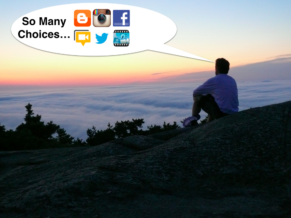This post first appeared on Edudemic.
As I look for entry points in working with school leaders just getting their feet wet with digital tools, I sometimes struggle to pinpoint the best place to start. I guess it is because there are so many useful tools out there that my colleagues could utilize to help them to change their workflows for the better. However, the important thing is not the tool at all. The important thing is that educational leaders are modeling the fact that they too are continuous learners who are striving to employ the most relevant resources that they can access to do their jobs.
In tackling this dilemma, I have decided to look at a few of the functions that school leaders perform and provide a couple of tools that can not only assist them but also help them model the integration of digital tools into their daily routines. Again, I am looking to stay away from a specific solution and instead list some of the options that are available for particular tasks. Choices are a good thing, so let’s embrace the fact that we live in a day and age where we have them!
When first getting started with digital tools, the most important task for school leaders is communication. Whether it is with staff, students, or parents, school leaders need to be strong communicators and provide their stakeholders with the appropriate information at the appropriate time. There are also different levels of communication that we deal with here. Are we just putting out information on upcoming events or are we telling our story and providing people with asynchronous opportunities to share in events and presentations that they cannot get to in person due to their busy schedules?
In an era of transparency and connectedness, we have the ability to tell our story every day of the school year instead of waiting for media coverage of something going on in our school. Why wait for that negative news item that brings the media swarming to your school when you can inundate people with the positive things happening on a daily basis. When people Google your school or district what do they find? What is the first impression they get from a digital walkthrough?
These are the questions that you need to answer for yourself as you start to think about the tools that you want to choose to communicate and the information that you want to communicate. Here are some of the types of communication we do in our district and how we do them:
- Basic Information on Events and Happenings - Blog, Facebook, Twitter
- Sharing our story - Burlington Learning Blog (A Post each day), District Instagram Account, Facebook
- Asynchronous Presentations and Conversations- Explain Everything, Google Hangouts, Slide Share, Scribd, Google Documents…
These are just a few of the countless ways that school leaders can communicate, collaborate, and engage with stakeholders in whatever the topic of the day is in their school community. It’s not critical that educational leaders use all of these resources, but it is critical that they start to get comfortable with some of them.
Patrick will be addressing this topic at the upcoming iPad Summit in Boston in his session titled iLeadership.

